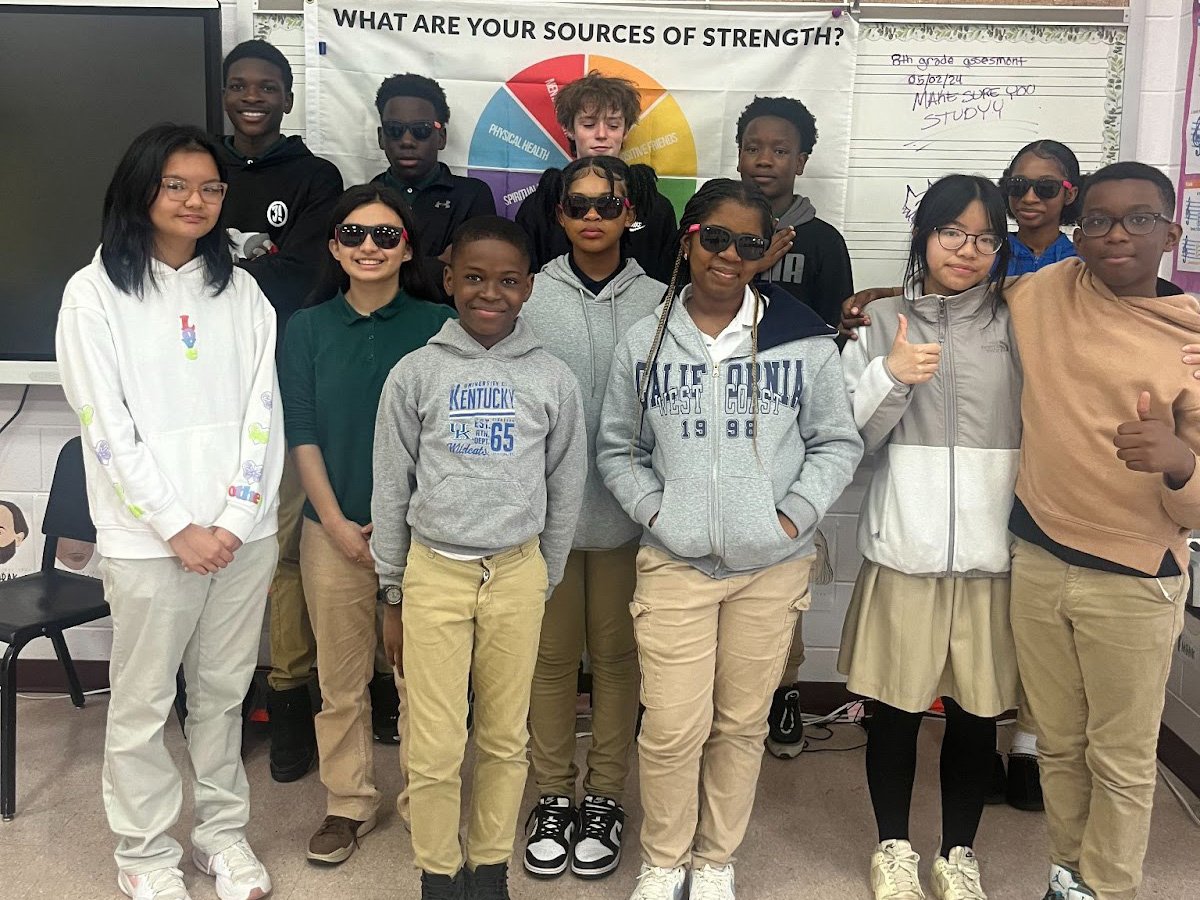From Awareness to Action: Recognizing and Responding to Suicide Warning Signs

Sources of Strength Peer Leaders from Greenbelt Middle School
September is Suicide Prevention Month, a critical time to focus on the mental health and well-being of our students.
Between 2022 and 2023, nearly 17% of Prince George’s County high school students reported seriously considering suicide, with 10% attempting.
These signs of mental distress indicate that a youth may be experiencing thoughts of suicide:
- Talking about wanting to die
- Isolation behaviors, increased anxiety, extreme mood swings, increased anger or rage
- Expressing hopelessness about the future
- Displaying severe or overwhelming emotional pain or distress
- Worrisome changes in behavior
- Giving away important or meaningful items
- Engaging in dangerous behaviors including alcohol or drug use
- Making a plan for suicide by looking for a way to access lethal means
What do I do if I see the signs?
1. Ask Direct Questions
Speaking about suicide will not put the thought into someone’s head. Often, the person will feel a sense of relief because they can finally speak about their pain with a trusted person.
Approach the situation with sensitivity, directness and a non-judgemental listening ear. It is important to be aware of your own biases and fears surrounding suicide.
Asking direct questions like “Are you thinking about killing yourself” in a non-judgemental manner can open a dialogue. It is vital to stay calm, listen attentively and non-judgmentally, offer reassurance, and encourage self/professional help. Immediate risk needs to be assessed and, if necessary, contact the 988 Suicide and Crisis Lifeline or 911 for immediate support.
2. Create a Safe Home Environment
If a child is displaying warning signs and has access to a weapon, medication or another way to harm themselves, secure and/or remove the lethal means from the home. Even if there is not someone currently at risk of suicide in your home, safely securing and storing ‘lethal means’ in your home can be life saving. Children often know more than we think they do!
3. Have Supportive Conversations
Tips for having supportive conversations include reassuring your child that they can ask you for help in a calm, non-accusatory manner. It is important to validate an individual’s feelings by making statements that express empathy for their distress. Examples: “It sounds like that was really difficult;” “I know how painful that can be;” and “What is it that you’re concerned about, and how can I help you?” are helpful to open up a dialogue.
4. Seek help
If a youth expresses suicidal ideation, it is imperative to speak to a healthcare provider to assist in treatment for any possible underlying mental health problems. Healthcare providers can also complete referrals for a student to receive therapy services. Help is available through both PGCPS and our community partners.
PGCPS Suicide Prevention Efforts
Our schools are equipped with professional school counselors, mental health clinicians, and school psychologists who support students in working through difficult situations and feelings. Additionally, all PGCPS staff have received training on the warning signs of suicide and how to have empathetic, non-judgemental conversations about mental health, as well as how to connect students who need it to mental health support.
Many middle and high schools are implementing the Sources of Strength program to promote mental health and prevent adverse outcomes like suicide, violence, bullying, and substance misuse. This program empowers students to spread messages of hope and strength to their school community.
Hazel Health also provides free teletherapy both at home and in school in many languages, and partner iMind Behavioral Health offers immediate crisis intervention, clinical evaluation, and collaboration with providers both in schools and in the community.
Preventing suicide is a collective responsibility that involves educators, families, and the community working together to create a safe and supportive environment for our students.
If you have any questions about accessing services for your student, please reach out to your child’s school, visit the PGCPS Mental Health Website or email mentalhealth@pgcps.org.
For immediate assistance:
- Suicide & Crisis Lifeline: Call 988
- Maryland 211 Health & Human Services: Call 211 or Text zip code to 898-211
- Crisis Text Line: Text HOME to 741741
- Safe Schools Maryland: Call 1-833-632-7233
Related Articles
View all blog posts


